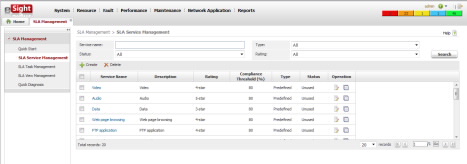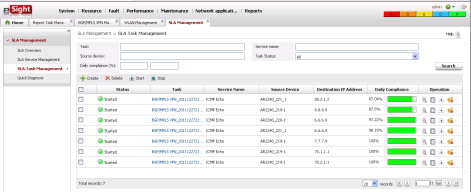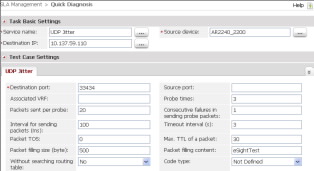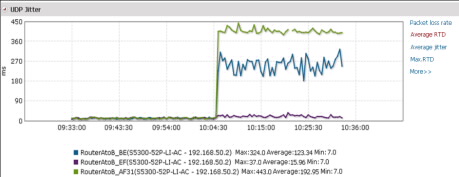Service-oriented SLA and easy operation simplify O&M needs.
Users can create an SLA service to carry out E2E network QoS monitoring and evaluate network and service QoS based on SLA compliance. eSight has more than 20 SLA service configuration items for video, audio, and network applications, allowing customers to define SLA services to meet their unique requirements.

eSight SLA Manager displays network QoS statistics and generates alarms in advance to ensure user experience.
After a user creates an SLA task, it will be executed periodically. QoS statistics are displayed based on daily compliance. When QoS meets the threshold conditions, eSight notifies administrators remotely, enabling administrators to diagnose faults in advance to ensure the user experience.

eSight SLA Manager provides a quick diagnosis function to narrow the fault scope and shorten fault diagnosis time.
The quick diagnosis function helps users locate faults by link segments, narrowing the fault scope.

Visible historical network data provides a basis for network optimization.
In actual applications, QoS values indicate services of different priorities. Different services on a same link can be compared, and the result shows whether QoS on a network has taken effect and provides a basis for QoS policy adjustment.

eSight SLA Manager provides real-time QoS monitoring, multi-dimensional data analysis, and graphical data display.
eSight uses the unified dashboard panel to vividly display QoS information, simplifying network management. The dashboard displays and manages various QoS information in a centralized manner to administrators, informing them of bandwidth usage and network exception information in real time. The QoS information includes top bandwidth usage, top discarding rate, top Peak Information Rate (PIR), and top matching rate.
eSight SLA Manager is installed on the same server as eSight Unified Network Management Platform standard or professional edition; therefore, configuration requirements for the operating environments are the same.
Deployment scenarios for eSight SLA Manager are the same as those for eSight Unified Network Management Platform. Source devices must be added to eSight, and the IP addresses of the source and destination devices can be pinged.




